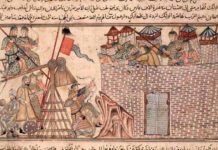One of the reasons that the Communist Party of Thailand (CPT) failed to emulate its comrades in Vietnam, Laos and Cambodia in effecting a successful revolution was the small size of the Thai working class. The Marxist-Leninist paradigm for Communist revolution was to educate and organize the urban, industrial working class who, as the proletariat, would form the vanguard of the revolution.
However, as Mao Zedong was to demonstrate, this was not possible to achieve in East Asia because of the preponderance of rural subsistence rice-growing peasants and the paucity of an industrial working-class. Achieving a revolution in this case required placing the peasantry at the vanguard of the movement, with all the problems that this proved to have.
The same situation applied in Thailand as well, since the country was organized along purely feudal lines in a system called the sakdina until 1870. According to sakdina, the role of the peasants was to support the elite nobility and the monarchy, as well as the monkhood (the ‘sangha’) through agricultural activities. Any crafts or industrial activities were organized in the small city centres or dedicated villages and controlled by non-Thais. The arrival of the British on the scene, signaled by the conquest and annexation of neighbouring Burma, meant Thailand was forced to sign the unequal Bowring Treaty of 1855.
The concessions that the British extorted included the right to process rubber and tin industries in bordering Malayan or Pattani provinces. To do so, they imported wage-labourers from colonial possessions in China (through Hong Kong) and India. These migrants represented the start of the Thai working class. That class has remained outnumbered by the capitalist class, including the petty capitalists, as well as the often impoverished rural peasantry classes.
In the years that followed, Japanese investment opened numerous factories throughout the Kingdom and this was one of the principal means by which the Thai working class was expanded. It is somewhat ironic that these factories, in which it was much more convenient for workers to gather together and educate and organize themselves, represented one of the main sources of opposition to Japanese occupation during the Second World War. Opposition took the form of sabotage and espionage, together with selected incidents of violence against Japanese soldiers.
In modern Thailand, no major or successful political party dedicated to democractic elections has been formed to represent workers’ interests. Even the Thai Rak Thai party, which created a broader and more inclusive coalition of societal interests than Thailand has ever seen and which included worker activists and former Communists within ins executive ranks, lost its worker component over complaints about the signing of Free Trade Agreements and the privatization of national industries such as electricity.








